Momma Bear’s Guide: When Planning To Use Caregivers
When you are first planning to use caregivers for your loved one, it can be a very intimidating process. I have been using in-home caregivers since 2014 and have learned a few things along the way. I will break down the process, step-by-step, so that it is not such an overwhelming task.
My oldest son was born with a rare genetic syndrome, although we didn’t know that until he was 7 years old. We did know early on that he had Cerebral Palsy, feeding issues, and global developmental delays.
When he was 6 years old, I finally gave in to pressure from my mother (!) and reached out to my county’s developmental disabilities office to see what, if any, support we would be eligible for. It’s different now, but back then, it was a 2-year waitlist to get accepted. Once we got in, our case manager immediately referred us to Children’s Intensive In-Home Services (CIIS) program. CIIS is a special program in our state for kids who are medically involved, medically fragile or have intensive behaviors. This was a 3-year wait.
When we finally got into CIIS, our case manager kept trying to get me to hire in-home caregivers so I could have a bit of a break. At the time, I was a stay-at-home mom and couldn’t figure out why I might need caregivers for my son.
One day, as I was preparing for the daily battle with C-Bear that was brushing his teeth, it suddenly hit me; I could hire someone to brush his teeth!! It was an eye-opening thought.
But if I was going to hire support workers to brush his teeth, what else would I want them to do? I was totally clueless on what support workers could and could not do while on the job, what kind of schedule I wanted, and what kind of skills and training I would want them to have. I do not recommend winging it as I did.
Note: I will be using the terms support workers and caregivers interchangeably in this article.
Starting the process
If you are thinking about hiring caregivers, approach it just as a Human Resource Manager would for a business. After all, depending upon how your state handles it, you will probably have to get an Employer Identification Number and become the official ’employer of record,’ also known as a ‘common law employer’. Your business is your loved one with disabilities and your job is to hire the best possible caregiver for them.
When looking to fill a vacancy at a business, an HR manager will have a list of skills, qualifications, and possibly certifications they are looking for in their ideal candidate. Why should you be any different?
If you or your loved one has been determined to be eligible for a caregiver through Medicaid funding, or if you are looking for a private pay caregiver, grab a pen and paper, and let’s start figuring out what you need.
Figuring out what you need in a caregiver
Schedule
On paper, divide your day into 4 parts; morning, afternoon, evening, and overnights. Think about when the support is most needed and prioritize them 1-4. Don’t worry, this is not a schedule that you will be held to!
Next, in your identified time slot(s), figure out if there are specific times of the day that the support is needed and what that support might look like. See the example below.
My son is an early bird and likes to get up at 3 am and will be awake until about 8:30 am. This shift typically helps with personal care, starting his breakfast, administering morning meds, and working on communication goals.
I know someone who uses support workers for her school-aged son. Her son likes to get up early in the morning and do arts and crafts projects before catching the bus to go to school. Once he gets home from school, he is just mentally done for the day, so support isn’t needed. Most of his support is during the weekdays but occasionally during the summer, the family will plan a special outing somewhere and prefers to take a support worker with them in case their son gets over-stimulated and needs to take a sensory break before rejoining the family.
Now that you have a basic idea of what your schedule needs to be, let’s move on to what type of supports are needed.
Type of support
Next up is to write down what type of support your loved one needs during the identified times. For this activity, you might want to refer to the plan documents you received from your case management entity. Here in Oregon, we know it as the Individualized Service Plan. This document will spell out what are the authorized services for you or your loved one, and that will look different for everyone.
Generally, authorized services will fall into two categories; Activities of Daily Living or Instrumental Activities of Daily Living
Activities of Daily Living (ADLs)
ADLs are those activities that are your basic self-care needs. These include:
- Bathing – providing cues or hands-on care
- Toileting – all aspects
- Personal Hygiene – washing face & hands, brushing teeth, shaving, etc.
- Feeding/eating – this could be meal prep, feeding someone, or using a feeding pump
- Ambulating/transferring/mobility/positioning – this could be a helping hand or full-on assistance with a lift, such as a Hoyer.
- Medication/oxygen use – setting up and/or administering
- Monitoring for health & safety

Instrumental Activities of Daily Living (IADLs)
IADLS require more complex thinking and organizational skills such as:
- Transportation and shopping
- Money management
- Meal Preparation
- Housekeeping
- Communication
- Medication management
Note:
Just because a service is authorized does not mean that a support worker has to be the one to provide that support. For instance, if bathing is an authorized service for your child, you as the parent can decide that bathing is something that only the parents will do.
Behavioral Support
Sometimes, the person receiving services will have a Behavioral Support Plan (BSP) in place. The reason for this can be anything from socially inappropriate behaviors to self-harming behaviors to extreme aggression and the plan will have strategies the family and support workers can use.
The next thing we want to add to our list is what kind of skills, experience, or certifications we will be looking for in our caregivers. My samples below are not an exhaustive list but are here to help jump-start your process. We will be using this information in another post to craft our help wanted ad.
General skills and work experience
- Wash, fold and put away laundry
- Lift 30lbs+ on a regular basis
- Know how to cook
- Do housekeeping which can involve bending, twisting, and lifting
- Provide transportation in their vehicle
Special skills & certifications
- Comfortable with various equipment such as feeding pumps, suction machines, ventilators, oxygen concentrators, catheters, etc.
- Familiar with administering various forms of medications including oral meds, suppositories, nebulizers, and rescue medications.
- Trained on alternative forms of communication
- CPR/1st aide certified
- To be a Certified Nursing Assistant, Licensed Practical Nurse, or Registered Nurse
- To have been certified in the proper techniques to physically restrain someone
Personality
When I am looking for a support worker, yes, I am looking at all their skills and qualifications, but for me, the deciding factor in deciding to hire someone is their personality. This is probably true in all industries but I wanted to point out that it is something you need to add to your list.
Think about your loved one. Do they do open up or shut down when they are around a certain type of personality?
My disabled son has always been around relaxed, easy-going personalities, as his family and support workers all fall in that category. One year, I took a chance and hired someone with a very upbeat, enthusiastic personality. I was really afraid that she would overwhelm him, sensory-wise. Instead, he ate it up!! Her shift started at 3 am, which was when he woke up and needed support. They would play 80s rock music and dance for hours and we called them the 3 am dance party! It was a great time for him, not so much for us, but he totally loved it!

When thinking about personalities, you may have to do some compromising because the personality also has to be a good fit for the rest of the family if the caregiver is going to be doing their job in your home.
Final thoughts
Planning the schedule, knowing what type of support is needed, and what skills & qualifications you are looking for, will be a big help to you when you get to the interviewing stage. It has been my experience, that everything can be taught to the right person but ideally, we are looking for someone that ticks all our boxes. Be sure to talk to your loved one, if they are verbal, to get their input on everything.
Be sure to add your name to the email list to be notified when the other posts in this series come out.
For more information, you might like these other articles.





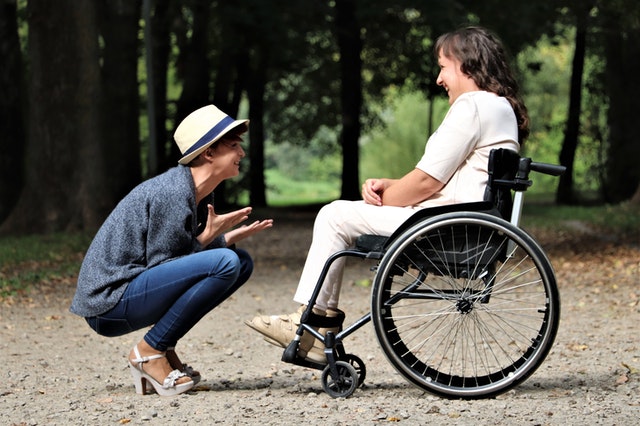

This is a fantastic article laying out everything you need to get a carer, 3am dance Party…oh dear I’d be getting a separate sound proof space.
Thank you for your kind words. I gave the soundproofing some serious thought!